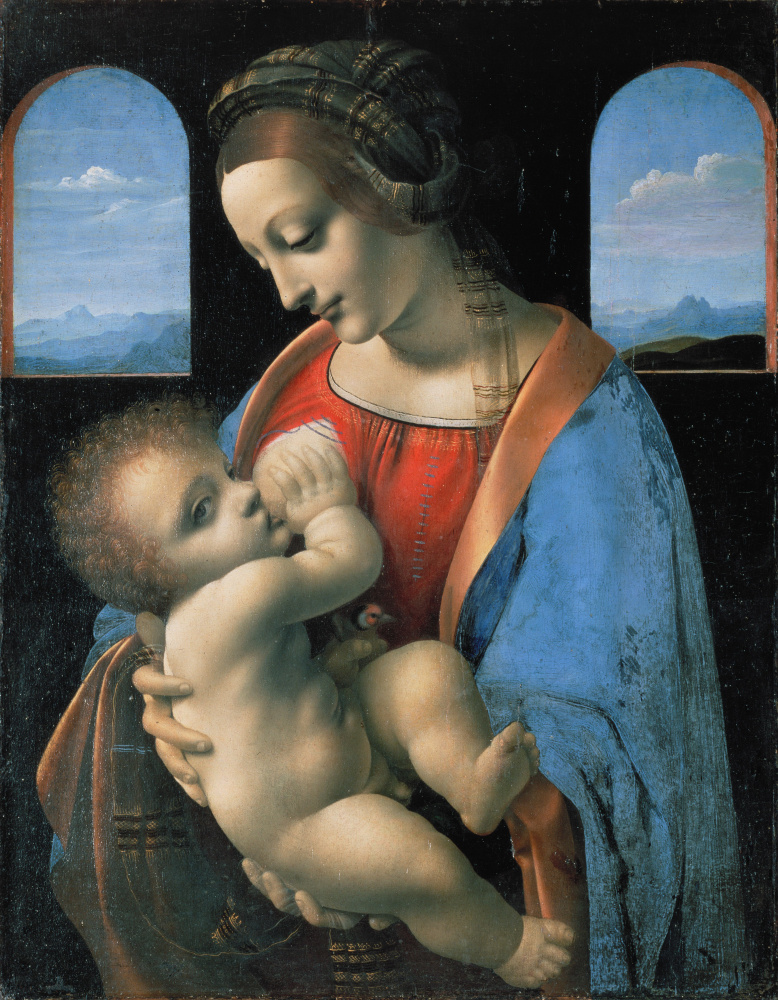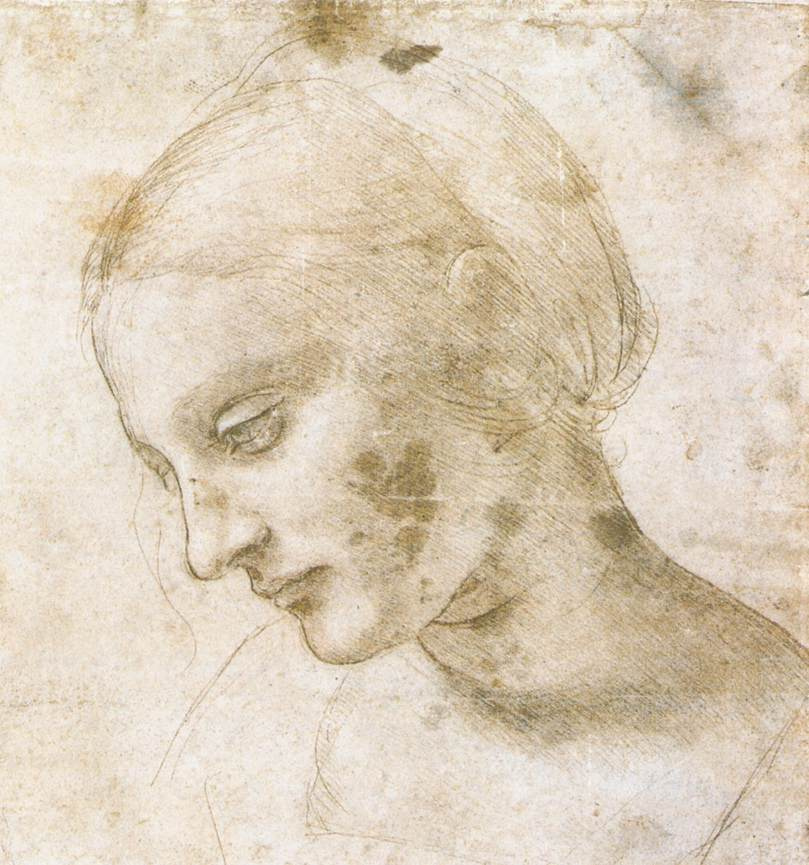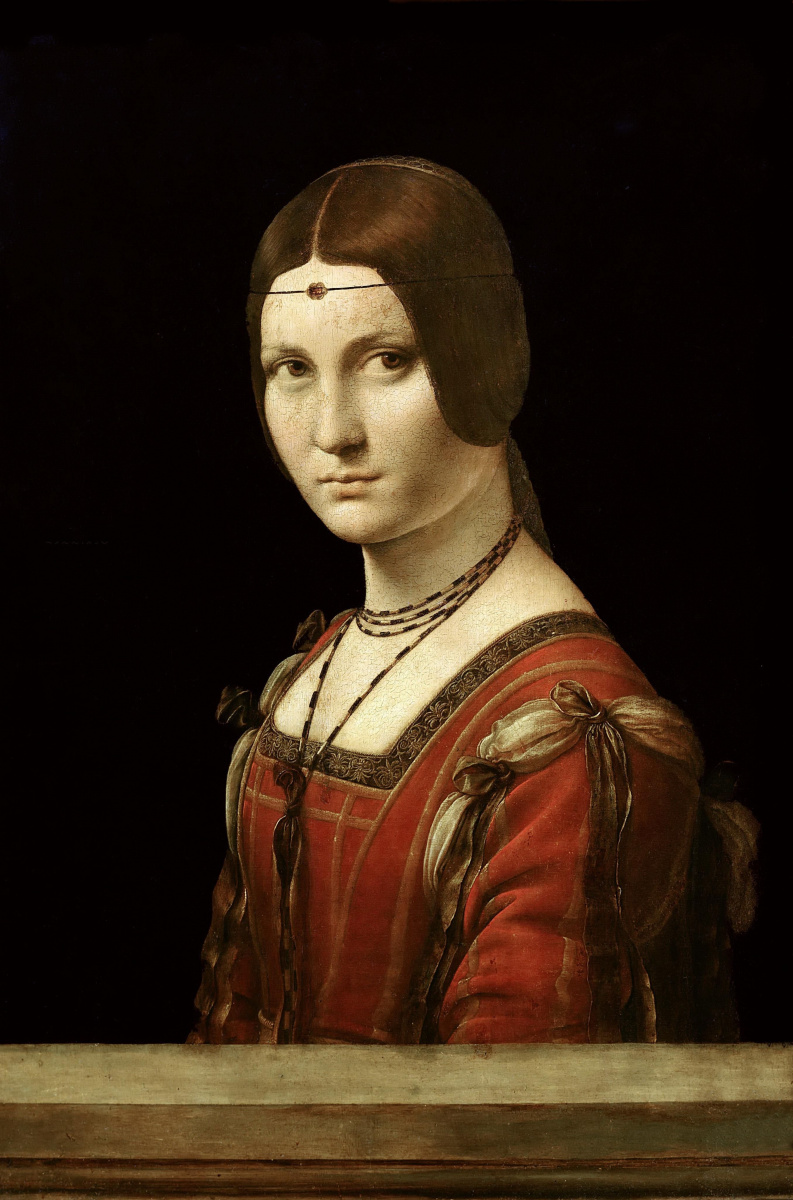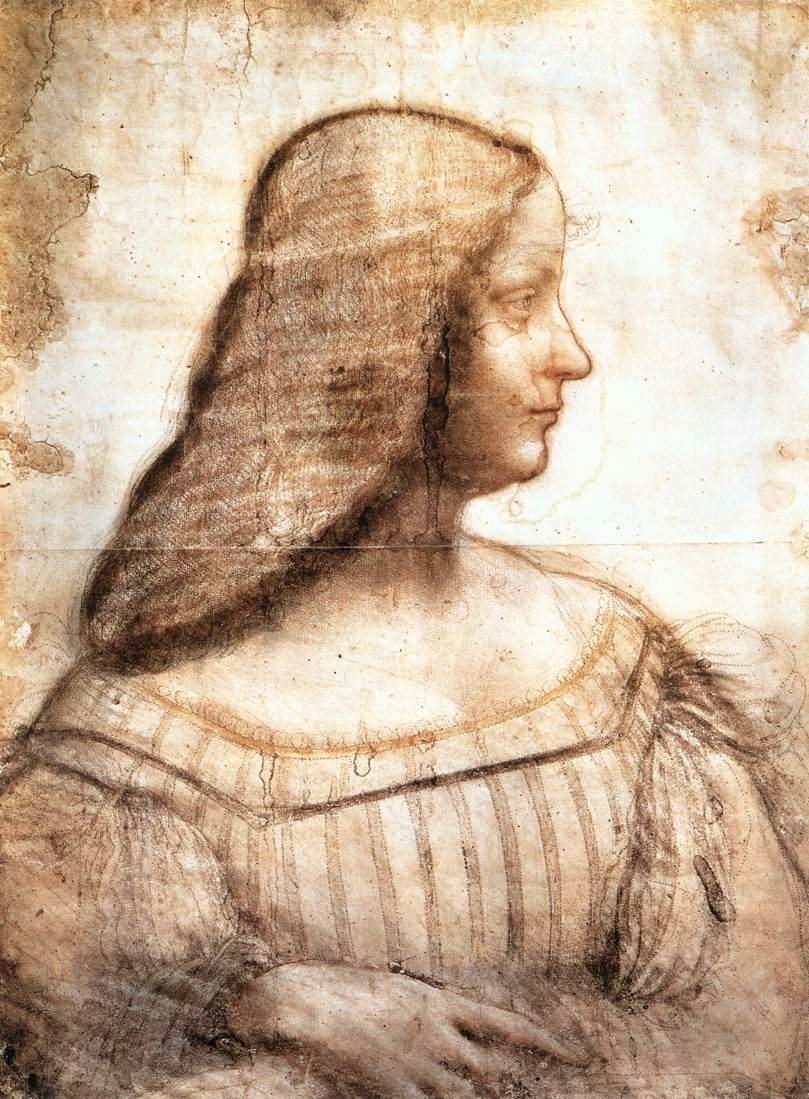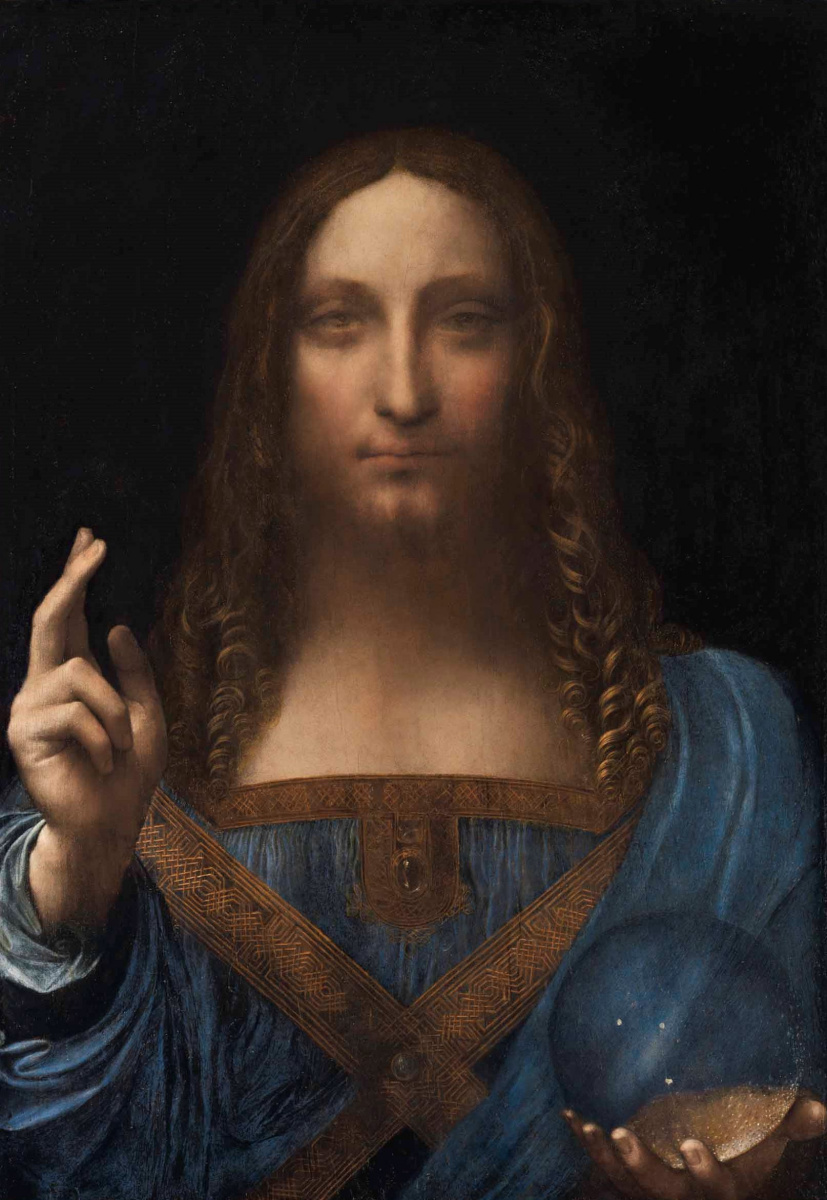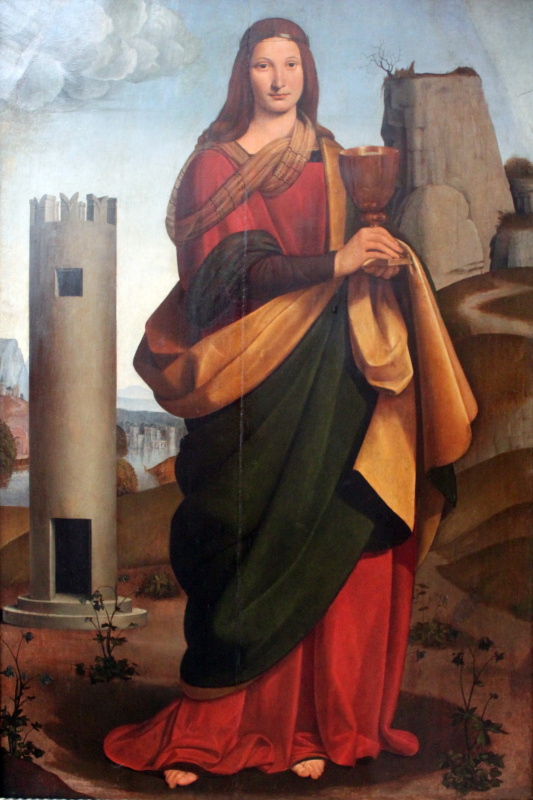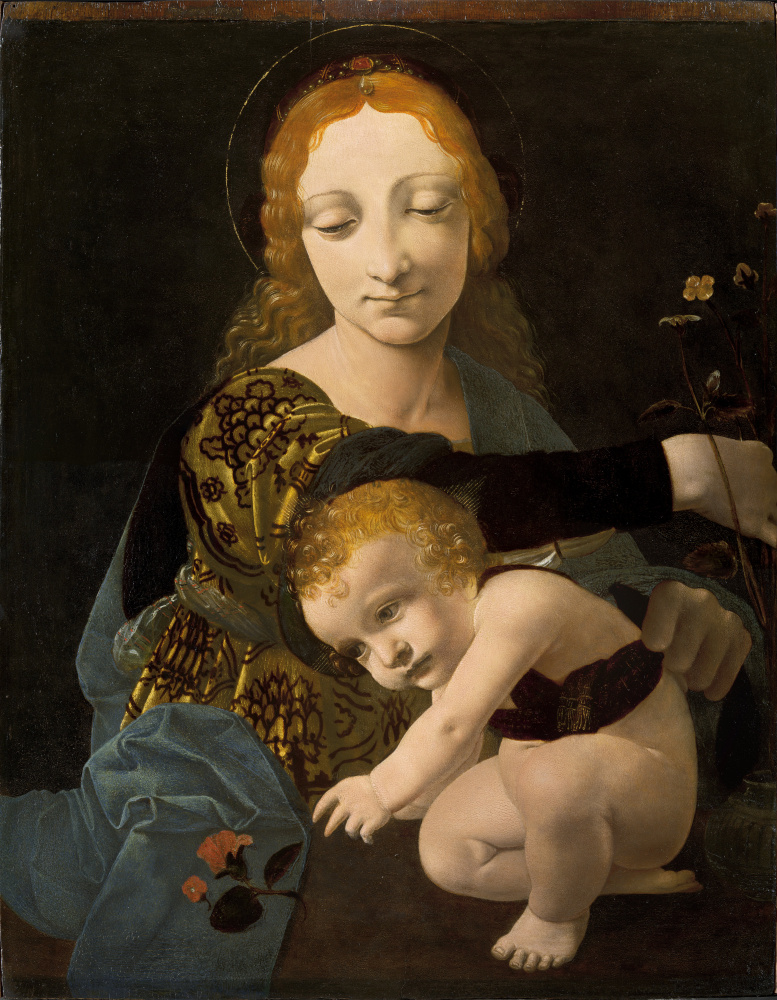Let's figure it out: why Madonna Litta was the subject of discussion on the eve of the 500th anniversary of Leonardo's death and what does it have to do with Boltraffio?
In view of the publicly expressed opinion of the British art critic about the painting Madonna Litta from the Hermitage collection, we are talking about doubts around the authorship of many famous paintings traditionally attributed to Leonardo da Vinci and about his students' works.

An important event in the world of art (and in the world in general) is approaching — 500 years since the death of Leonardo da Vinci. Without thinking about how weird a tradition to celebrate the death of a great man is, let’s better talk about what is happening around this date. Naturally, exhibitions are being prepared, books written, films shot, articles published and discoveries made. Or, rather, attempts at discoveries.
For example, the British art historian, Honorary Professor at the University of Oxford Martin Kemp suddenly said that he was outraged that the Hermitage Madonna Litta at an exhibition in the National Gallery in London was presented as the work of Leonardo da Vinci. Although he is absolutely sure that in fact it was created by Giovanni Antonio Boltraffio, Leonardo’s student. In response to this, the Hermitage experts politely replied that they were not much interested in Mr. Kemp’s valuable opinion, since they had their own valuable opinion.
For example, the British art historian, Honorary Professor at the University of Oxford Martin Kemp suddenly said that he was outraged that the Hermitage Madonna Litta at an exhibition in the National Gallery in London was presented as the work of Leonardo da Vinci. Although he is absolutely sure that in fact it was created by Giovanni Antonio Boltraffio, Leonardo’s student. In response to this, the Hermitage experts politely replied that they were not much interested in Mr. Kemp’s valuable opinion, since they had their own valuable opinion.
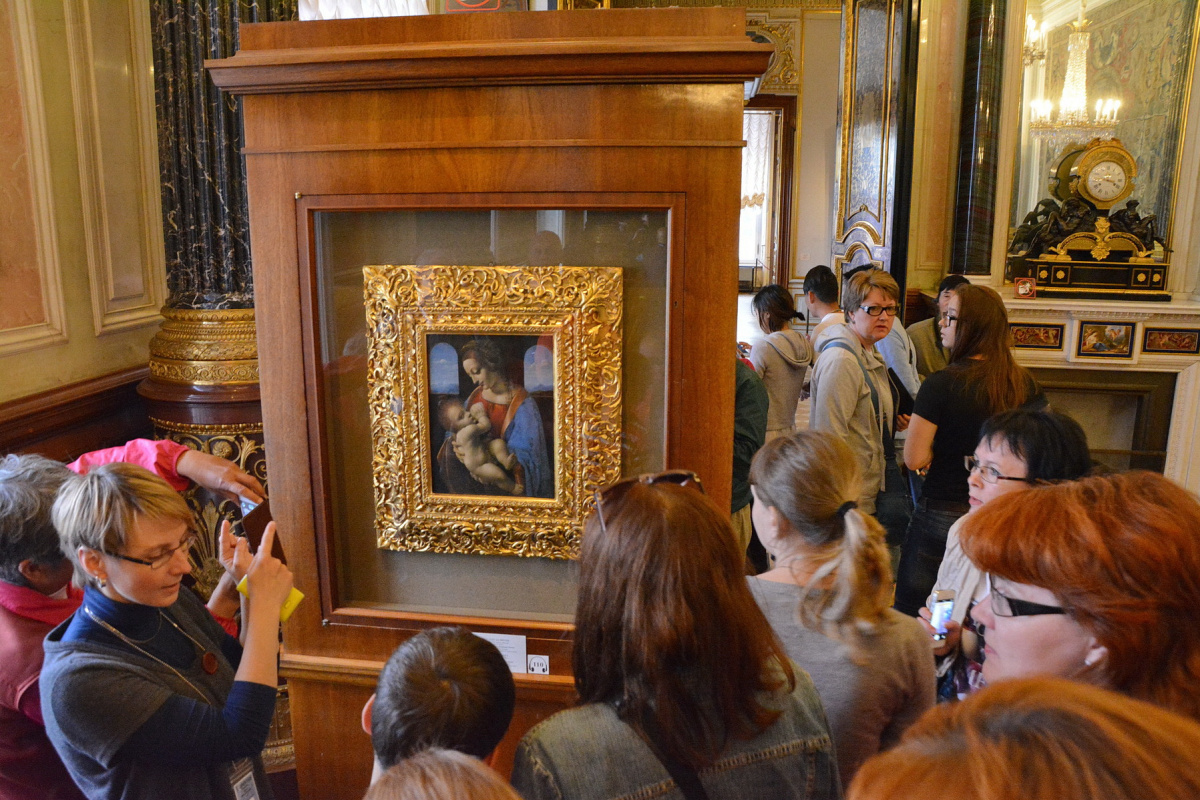
The painting in the Hermitage. Photo source: filurin.ru
The press presents this piece of news as sensational, although in fact it is not even fresh — after all, the exhibition that outraged Mr. Kemp, with the Madonna Litta work by Leonardo, took place almost seven years ago. However, disputes about the authorship of the second most famous Madonna of the Hermitage have been going on for much longer than seven years, almost since the appearance of this painting in the Museum’s collection.
Madonna Litta
1490-th
, 42×33 cm
There were a lot of reasons for that. Among them, it is worth mentioning a rather poor state of the picture — when it appeared in the Hermitage, it soon had to be transferred from the panel to the canvas, the absence of direct references to it from Leonardo’s biographers, and some uncharacteristic moments for him. For example, stiff drawing of the baby’s hands and a surprisingly meager elaboration of the Madonna’s cloak.
There are also a couple of arguments in favor of the authorship of his students: for example, the surviving sketches of the infant Christ and the fragment of Madonna’s garment, executed by Boltraffio’s hand. However, there is a powerful argument in favor of da Vinci’s important role in this work: the sketch of Madonna Litta's head, stored in the Louvre and created, undoubtedly, by Leonardo.
There are also a couple of arguments in favor of the authorship of his students: for example, the surviving sketches of the infant Christ and the fragment of Madonna’s garment, executed by Boltraffio’s hand. However, there is a powerful argument in favor of da Vinci’s important role in this work: the sketch of Madonna Litta's head, stored in the Louvre and created, undoubtedly, by Leonardo.
Madonna Litta (sketch)
1480-th
In addition to the above mentioned at least somehow real arguments, opponents of da Vinci’s authorship love to make assumptions a la "At the Milan court Leonardo was very busy creating a colossal equestrian statue and The Last Supper, so he had no time for creating Madonna Litta."
Agree, this objection is difficult to call serious — while working for Ludovico il Moro, Leonardo quite wastefully spent his days on anatomical studies, recreating the scheme of the proportions of the human figure by Vitruvius, projects of various mechanisms, the invention of the machine for grinding needles and many other activities, so he could easily find some time to create a small painting. Or at least to start it and at some point leave it to his students (Leonardo's love to quit work at the cardboard stage is known to everyone).
Agree, this objection is difficult to call serious — while working for Ludovico il Moro, Leonardo quite wastefully spent his days on anatomical studies, recreating the scheme of the proportions of the human figure by Vitruvius, projects of various mechanisms, the invention of the machine for grinding needles and many other activities, so he could easily find some time to create a small painting. Or at least to start it and at some point leave it to his students (Leonardo's love to quit work at the cardboard stage is known to everyone).
Beautiful ferronera (Portrait of unknown)
1490-th
, 63×45 cm
However, concerning the disputes over authorship, the Hermitage has a good company.
For example, the Louvre, which has the largest collection of paintings by da Vinci, has been defending the authorship of La Belle Ferronnière for decades. The museum has almost surrendered with Bacchus and "given it away" to the workshop, and "settled out" the small Annunciation, previously attributed to the very young Leonardo, from the rest of the master’s paintings.
Bacchus (St. John the Baptist in the wilderness)
1515, 177×115 cm
Annunciation
1478
The Pinacoteca Ambrosiana in Milan also has to fend off the assumption that The Portrait of a Musician was painted not by Leonardo, but, say, Antonello da Messina.
Portrait of a musician
1485, 43×31 cm
Specialists of the National Gallery in London, which owns the second, later Virgin of the Rocks, probably are not very happy, reading the articles of their colleagues attributing a substantial part of the work on this painting to the de Predis brothers.
Virgin of the rocks (Madonna of the grotto)
1508, 189.5×120 cm
The owners of the Scottish and New York Madonna of the Yarnwinder are also not pleased by European art historians, with a rare consensus considering their Madonnas either containing a very small percentage of Leonardo’s participation, or being copies of the lost original, made by his students.

The workshop of Leonardo da Vinci, possibly with the participation of the master himself. The Lansdowne Madonna (one of the two versions of Madonna of the Yarnwinder) 1500, transferred to canvas, oil, private collection, New York. Photo source: wikimedia.org
In addition, there is also the badly painted "profile" of Isabella d’Este, which they, nevertheless, try to "attribute" to Leonardo (based on his graphic sketch
for the portrait and repeated requests of the Duchess to create a picturesque version).
Isabella d'este
1500, 63×46 cm
Consider also La Belle Ferronnière, belonging to the Hahn family: according to general opinion, the painting was created around the 18th — 19th century, and according to the owners, it is a true Leonardo, and even better than that in the Louvre.

Unknown imitator of Leonardo. La Belle Ferronnière of the Hahn family, approx. 1750 (?), New York. Photo source: wikimedia.org
It is also worth to mention The Beautiful Princess drawn on parchment (which Leonardo didn’t really use), the authorship of which already mentioned in the beginning of the text Martin Kemp with conviction ascribes to Leonardo. However, other experts are not so firmly convinced of it, and a famous British art forger Shaun Greenhalgh even claims that when he drew the "beautiful princess", her name was Sally and she worked as a cashier, but who would believe a cheater? Although it is worth noting that for some reason the "beautiful princess" was not invited to the exhibition, where the Madonna Litta was exhibited under the signature of Leonardo.
Presumably Leonardo da Vinci (?). The Beautiful Princess, approx. 1490's. Attributed by Martin Kemp. Parchment, ink, colored chalk. Private collection, Canada.

It is logical to mention the recently "rediscovered" Louvre painting of the nude Monna Vanna with a grossly fashioned face and an awkward body position (in some places the strokes are still "left-handed").
And, of course, we must not forget about the sensational, sold for a record price for an artwork, Salvatore Mundi, so "tortured" with overpainting and restoration that it’s impossible to say whether it was created by Leonardo, Solario, Ambrogio de Predis (don't confuse with the rest of the de Predis), Boltraffio, Luini, d’Oggiono, da Sesto, Melzi, Giampietrino, da Lodi, or even — how awful! — by Salai, who painted hopelessly badly, but whose works were often corrected by the teacher.
Salvator Mundi (Savior of the World)
1500, 65.7×45.7 cm
After this enumeration of all (although, most likely, not all) "birds of Leonardo’s feather", there appears a reasonable question: why are the works of the teacher most often attributed to Boltraffio, considering the rich variety of choice? Perhaps because he is one of the strongest painters among the Leonardesque artists of the first Milan period.
This boy from an aristocratic family met Leonardo in Florence, at the age of about 12 years. Given his background, we can assume that he became a pupil of the quite well-known artist primarily because he wanted and was able to draw (unlike the same Salai, who got to da Vinci’s studio only because of his beauty).
Having gone to Milan together with his mentor, he stayed with him for a significant part of the first Milan period, and, therefore, watched the transformation of Leonardo’s style and had the opportunity to work on the same panels and use the same materials as his teacher. The themes of his works are quite diverse: he painted portraits, Madonnas and saints feeling comfortable enough in both small and large formats.
Having gone to Milan together with his mentor, he stayed with him for a significant part of the first Milan period, and, therefore, watched the transformation of Leonardo’s style and had the opportunity to work on the same panels and use the same materials as his teacher. The themes of his works are quite diverse: he painted portraits, Madonnas and saints feeling comfortable enough in both small and large formats.
The Madonna and child
1490-th
, 92.7×67.3 cm
The composition of Boltraffio’s works is usually well thought out (although overloaded), his strokes are accurate, the proportions are precise (and it is worth mentioning that in Leonardo’s time, far from every artist knew how to check their eye using mathematics). His artworks contained neither anatomical mistakes nor rough colours, characteristic of Salai, nor some sweetness of Melzi.
His palette is quite close to Leonardo’s. Boltraffio’s drawing of the adult characters' hands is also very good (although they are sometimes too big), and the faces of his heroines, at first glance, are very similar to the characteristic beauties of da Vinci. We all know those eyes with swollen eyelids, and the recognizable, almost invisible eyebrows, and the shape of a thin, rather long straight nose and, most importantly, a hint of a smile, not even a curve of the mouth, but only a tension in its corners.
His palette is quite close to Leonardo’s. Boltraffio’s drawing of the adult characters' hands is also very good (although they are sometimes too big), and the faces of his heroines, at first glance, are very similar to the characteristic beauties of da Vinci. We all know those eyes with swollen eyelids, and the recognizable, almost invisible eyebrows, and the shape of a thin, rather long straight nose and, most importantly, a hint of a smile, not even a curve of the mouth, but only a tension in its corners.
Portrait of a lady in Saint Lucia
1509, 51.5×36.5 cm
Having talked about similarities, it is worth talking about the differences: they are quite noticeable.
This is the already mentioned clumsy drawing of the child’s hands, the habit of repeating over and over again in the paintings that one successfully found pose, dissociation of characters in multi-figured compositions, static poses, archaic interpretation of the landscape and quite different (despite similar proportions) impression of the faces. The faces of Boltraffio’s heroines (as well as the heroines of Marco d’Oggiono, who also quite convincingly copied his teacher’s style) are always bulkier, denser, fleshier; Leonardo’s favourite pointed cheekbones are smoothed out, instead there are round (though pale) cheeks and chins.
Left: Giovanni Boltraffio. St. Barbara (1502, oil on panel. Gemäldegalerie, Berlin).
Portrait of a young man as Saint Sebastian
1490-th
, 48×36 cm
In general, Boltraffio is more about flesh, rather than spirit. His Madonnas are so material that they can be desired. Leonardo, however, achieved that amazing synthesis of realistic and mystical, that his Madonnas, with all their femininity, were hard to imagine as sexual objects.
The virgin and child (Madonna of the Roses)
1490-th
, 45.5×35.6 cm
Of course, all this does not negate the fact that Boltraffio was a very good painter, even though he, like the rest of the Leonardesque artists, remained in captivity of his teacher’s elusive smile.
Author: Oksana Sanzharova
Author: Oksana Sanzharova
Arthive: watch us on Instagram






